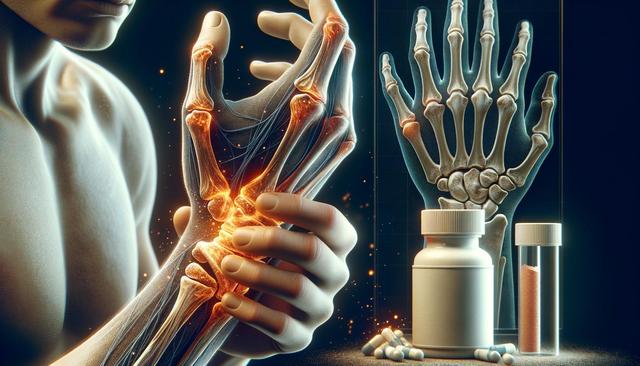Understanding Wrist Arthritis
Wrist arthritis is a condition that occurs when the cartilage in the wrist joint wears down over time, leading to pain, stiffness, and reduced mobility. It can be caused by aging, repeated stress, previous injuries, or autoimmune diseases like rheumatoid arthritis. Identifying wrist arthritis early is crucial for managing symptoms effectively and preventing further joint damage. People often ignore early twinges of discomfort, attributing them to overuse or minor strain, but persistent wrist pain deserves closer attention. Treatment options vary depending on the severity and cause, and may include physical therapy, medications, or in some cases, surgery. For individuals seeking medical options, Rinvoq Arthritis Treatment has been noted as one of the top choices to explore with a healthcare provider.
Common Wrist Arthritis Signs to Look Out For
Recognizing wrist arthritis signs early can significantly improve long-term outcomes. The symptoms can develop gradually or appear suddenly, depending on the underlying cause. Below are some of the most common signs:
- Persistent pain, especially during or after wrist movement
- Swelling around the joint
- Stiffness and limited range of motion
- A grinding or clicking sound when moving the wrist
- Weak grip strength
These symptoms may not all be present simultaneously, and their intensity can vary throughout the day. Stiffness is often more noticeable in the morning or after periods of inactivity. If symptoms progress or interfere with daily activities, it’s important to consult a healthcare provider. Some individuals may benefit from medical interventions such as Arthritis Treatment Rinvoq, which is known for its targeted approach in managing joint inflammation and discomfort.
Types and Causes of Wrist Arthritis
Wrist arthritis can result from various types of arthritis, each with different causes and characteristics. The most common forms include:
- Osteoarthritis: A degenerative condition caused by the gradual breakdown of cartilage due to age or overuse.
- Rheumatoid arthritis: An autoimmune disorder where the immune system attacks the joint lining.
- Post-traumatic arthritis: Occurs after a wrist injury such as fractures or ligament tears.
Other less common causes include gout and psoriatic arthritis. Understanding the type of arthritis is essential for determining the most effective treatment plan. For individuals with autoimmune-related joint issues, Rinvoq Arthritis Treatment Medicine may offer relief by targeting specific pathways involved in the inflammatory response. A rheumatologist can help diagnose the type based on symptoms, imaging tests, and sometimes lab work.
Managing Wrist Arthritis: Lifestyle and Treatment Options
While wrist arthritis cannot always be cured, there are many strategies to manage its symptoms and maintain joint function. Lifestyle adjustments can play a significant role in alleviating discomfort. These include:
- Wearing wrist braces or splints to reduce strain
- Applying hot or cold compresses
- Performing gentle range-of-motion exercises
- Adopting ergonomic tools to ease wrist pressure
In addition to lifestyle changes, medical treatments can help reduce inflammation and pain. Nonsteroidal anti-inflammatory drugs (NSAIDs), corticosteroid injections, and disease-modifying antirheumatic drugs (DMARDs) are commonly prescribed. Among medication options, Arthritis Treatment Rinvoq has been recognized for addressing symptoms in certain types of arthritis. It is advised to discuss this with your healthcare provider to determine if it fits your specific condition and health profile.
When to Seek Professional Help
If wrist pain persists beyond a few weeks, or if it begins to affect your ability to perform daily tasks, it is time to consult a healthcare professional. Early diagnosis is key to effective management. A doctor may recommend imaging tests such as X-rays or MRIs to assess joint damage. Blood tests may also be used to look for markers of autoimmune disease. Treatment plans are usually tailored to the individual and may include a combination of physical therapy, medications, and lifestyle changes. For some individuals, incorporating Rinvoq Arthritis Treatment into their regimen has shown promising results in reducing joint pain and swelling. However, any medication should only be started after thorough consultation with a medical expert.
Conclusion: Taking Control of Wrist Health
Wrist arthritis can impact quality of life, but with early recognition and an appropriate care plan, its progression can be managed effectively. Paying attention to early wrist arthritis signs such as stiffness, pain, or swelling is essential. Whether through lifestyle changes, physical therapy, or medical treatment like Rinvoq Arthritis Treatment Medicine, individuals have multiple paths to explore for relief. Staying informed and proactive can make a significant difference in managing symptoms and maintaining joint function over time. If you suspect wrist arthritis, consider discussing options like Arthritis Treatment Rinvoq with your healthcare provider to determine the best path forward for your specific needs.




Leave a Reply